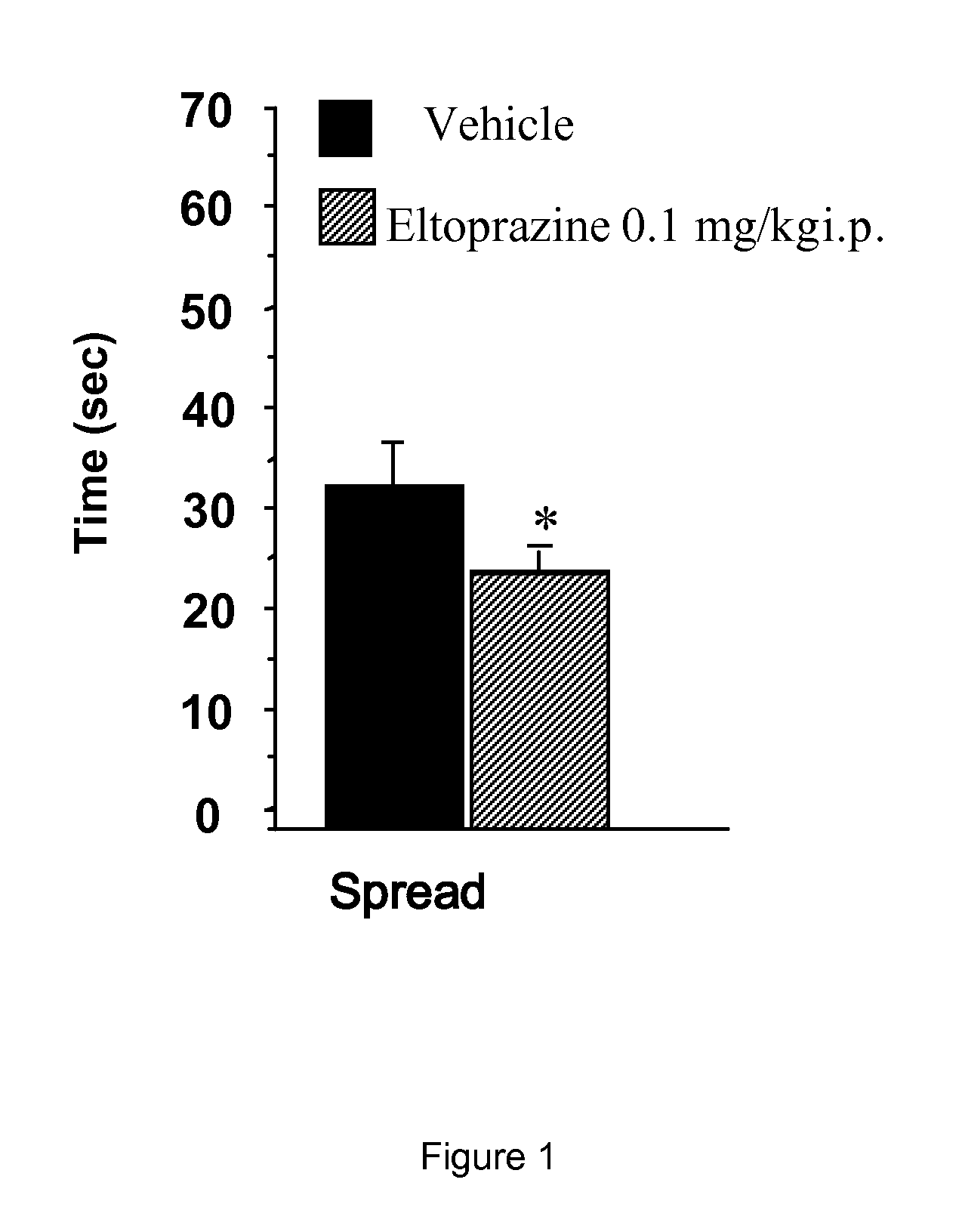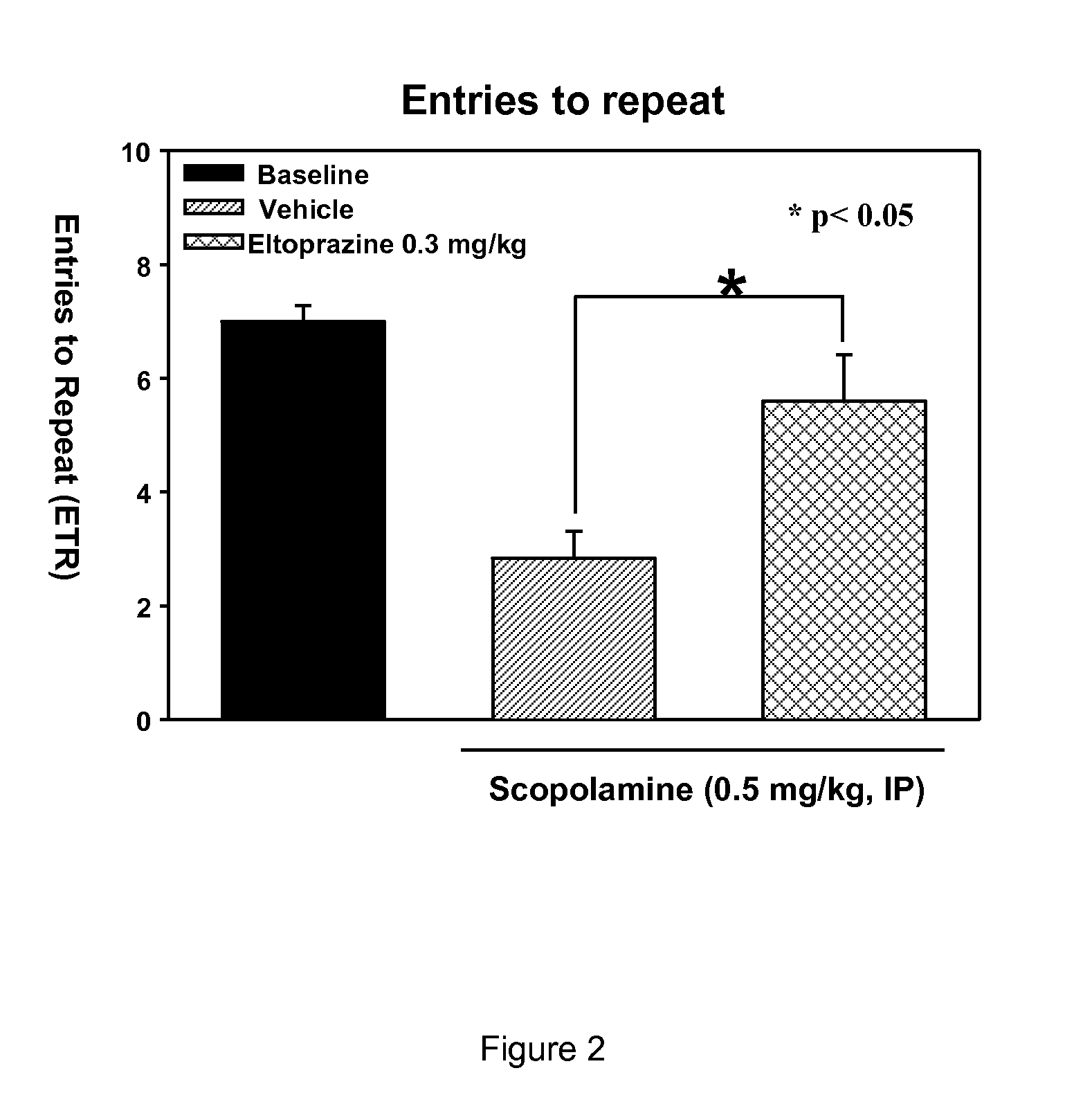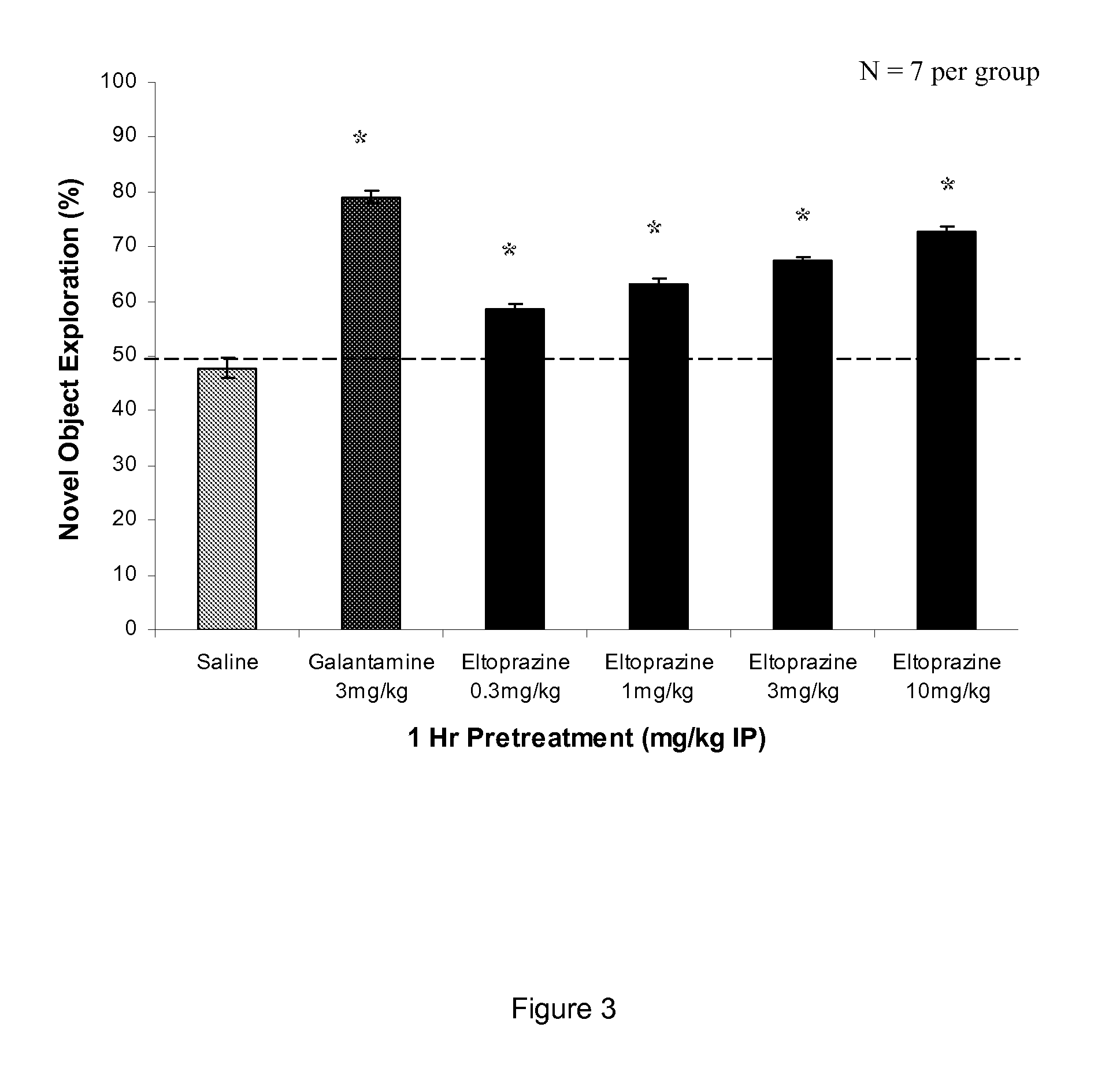Treatment for Neurological and Mental Disorders
a neurological and mental disorder and treatment technology, applied in the field of treatment for neurological and mental disorders, can solve the problems of emotional disturbance, loss of intellectual faculties, uncontrolled movements, etc., and achieve the effect of improving cognitive function
- Summary
- Abstract
- Description
- Claims
- Application Information
AI Technical Summary
Benefits of technology
Problems solved by technology
Method used
Image
Examples
example 1
The Effects of Eltoprazine on Symptoms of Attention Deficit Hyperactivity disorder (ADHD) in adults: A double-blind, multiple-dose, crossover, Safety and Preliminary Efficacy Trial
[0160]The primary objective of this study was to compare the effects of two doses of eltoprazine with placebo on symptoms of ADHD in adults. The primary efficacy parameter is the Attention-Deficit / Hyperactivity Disorder Rating Scale-IV (ADHD-RS-IV).
Methodology:
[0161]This double-blind, multiple-dose, placebo-controlled, crossover study was conducted to assess the effects of 14 days of oral eltoprazine treatment in 48 adults with ADHD. Subjects eligible for study enrollment were to have met Diagnostic and Statistical Manual of Mental Disorders, Fourth Edition, Text Revision (DSM-IV-TR) criteria for ADHD. Assessment was to be made by clinical history, a Structured Clinical Interview for DSM-IV Axis Disorders-Research Version (SCID-RV), and a Conners' Adult ADHD Diagnostic Interview for DSM IV (CAADID).
[0162]O...
example 2
Treatment of Inattention and Hyperactivity in Schizophrenia with Eltoprazine
[0174]Patients presenting clinically with symptoms of schizophrenia such as delusions, hallucinations, and disorganized or altered speech according to the DSM-IV are evaluated with conventional testing using Eye Tracking Dysfunction and Impaired Prepulse Inhibition and the MATRICS test battery as well as the CGI-I and ADHD-RS-IV inattention and hyperactivity subscales and other tests routinely used by mental health professionals to evaluate schizophrenia.
[0175]Patients are prescribed 10 mg / day eltoprazine and then evaluated again after 2 weeks to determine if symptoms have improved. After evaluation, the dosage is adjusted up or down or kept the same depending on the change in the symptoms of schizophrenia. The treatment is maintained for as long as necessary to effect a stable resolution of the symptoms of schizophrenia.
example 3
Treatment of Depression with Eltoprazine
[0176]Patients presenting clinically with symptoms of depression according to the DSM-IV are evaluated with conventional testing using behavioral tests such as Hamilton Depression Inventory, Beck Depression inventory.
[0177]Patients are prescribed 5 mg / day eltoprazine and then evaluated again after 2 weeks using the same behavioral tests whereupon dosage is adjusted up or down or kept the same depending on the individual response to the initial dosage. Administration is maintained for as long as necessary to ameliorate symptoms of depression.
PUM
| Property | Measurement | Unit |
|---|---|---|
| Concentration | aaaaa | aaaaa |
| Concentration | aaaaa | aaaaa |
| Concentration | aaaaa | aaaaa |
Abstract
Description
Claims
Application Information
 Login to View More
Login to View More - R&D
- Intellectual Property
- Life Sciences
- Materials
- Tech Scout
- Unparalleled Data Quality
- Higher Quality Content
- 60% Fewer Hallucinations
Browse by: Latest US Patents, China's latest patents, Technical Efficacy Thesaurus, Application Domain, Technology Topic, Popular Technical Reports.
© 2025 PatSnap. All rights reserved.Legal|Privacy policy|Modern Slavery Act Transparency Statement|Sitemap|About US| Contact US: help@patsnap.com



